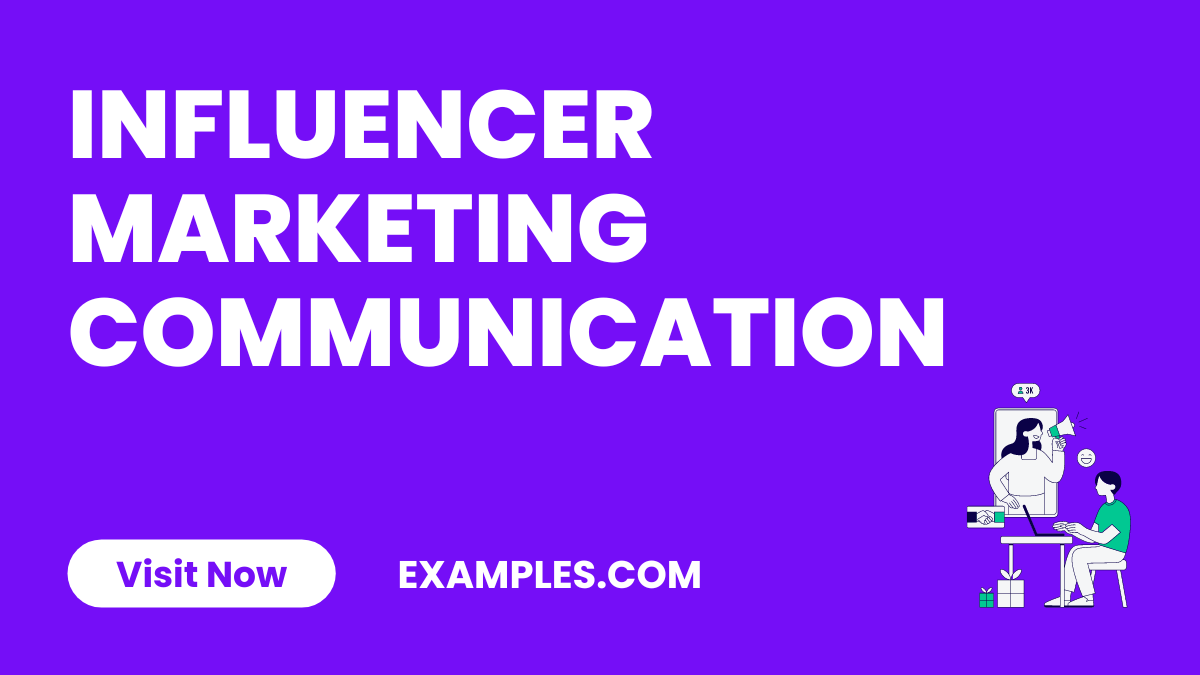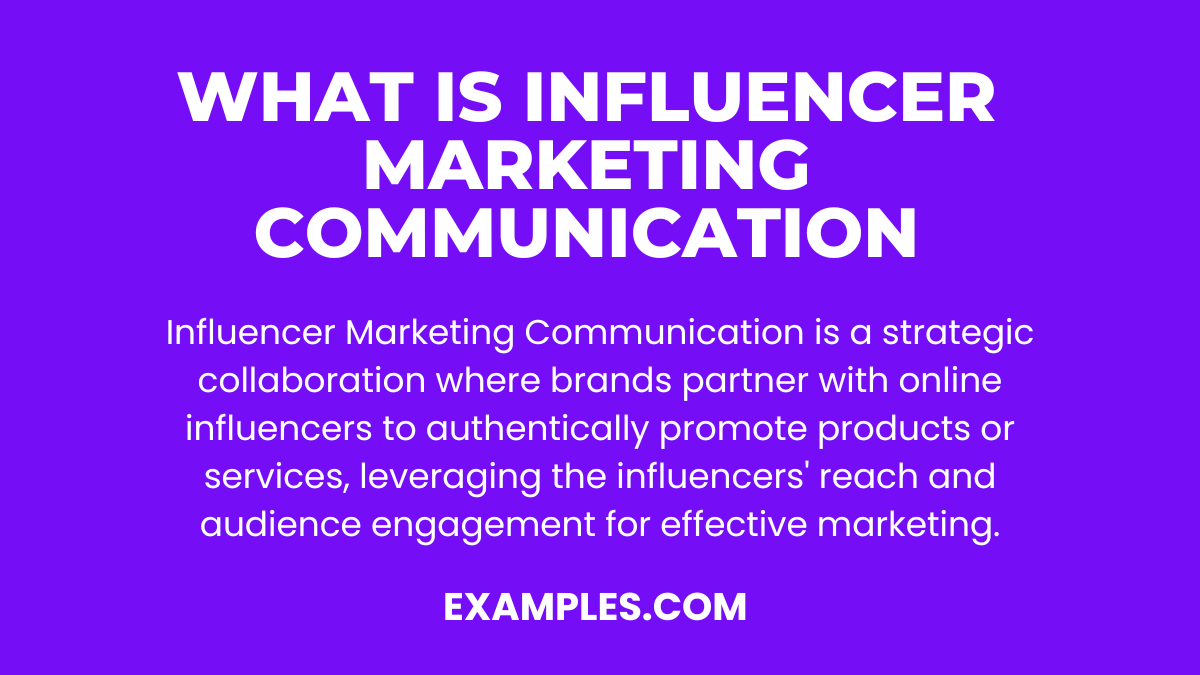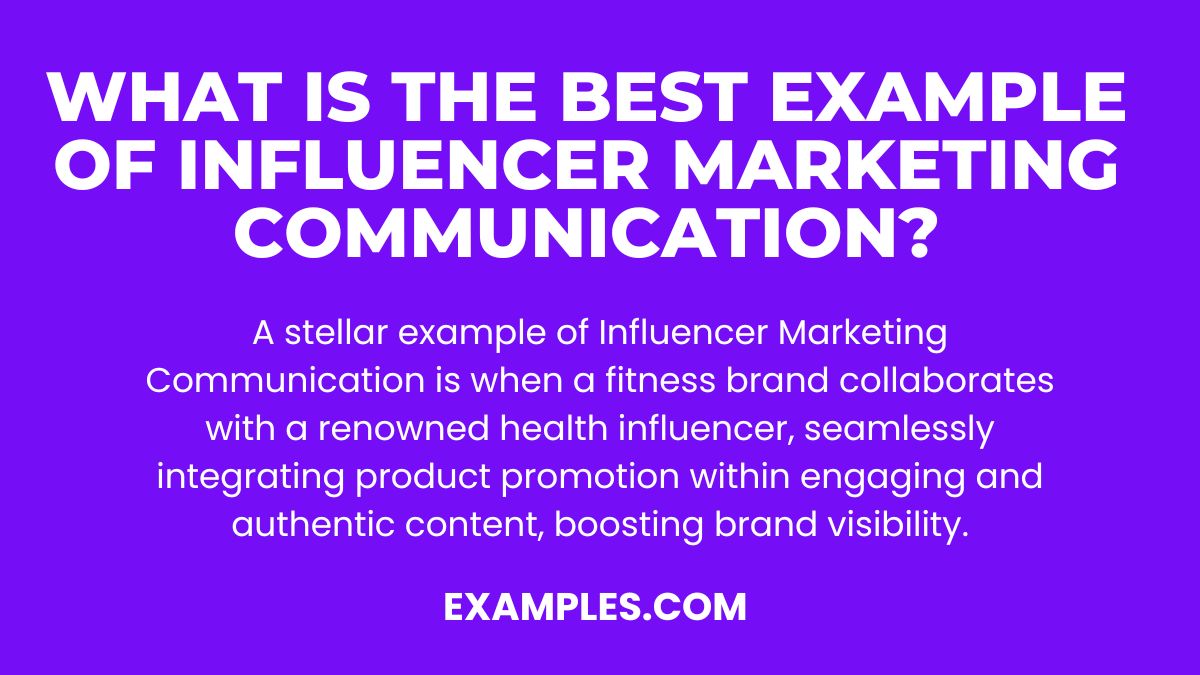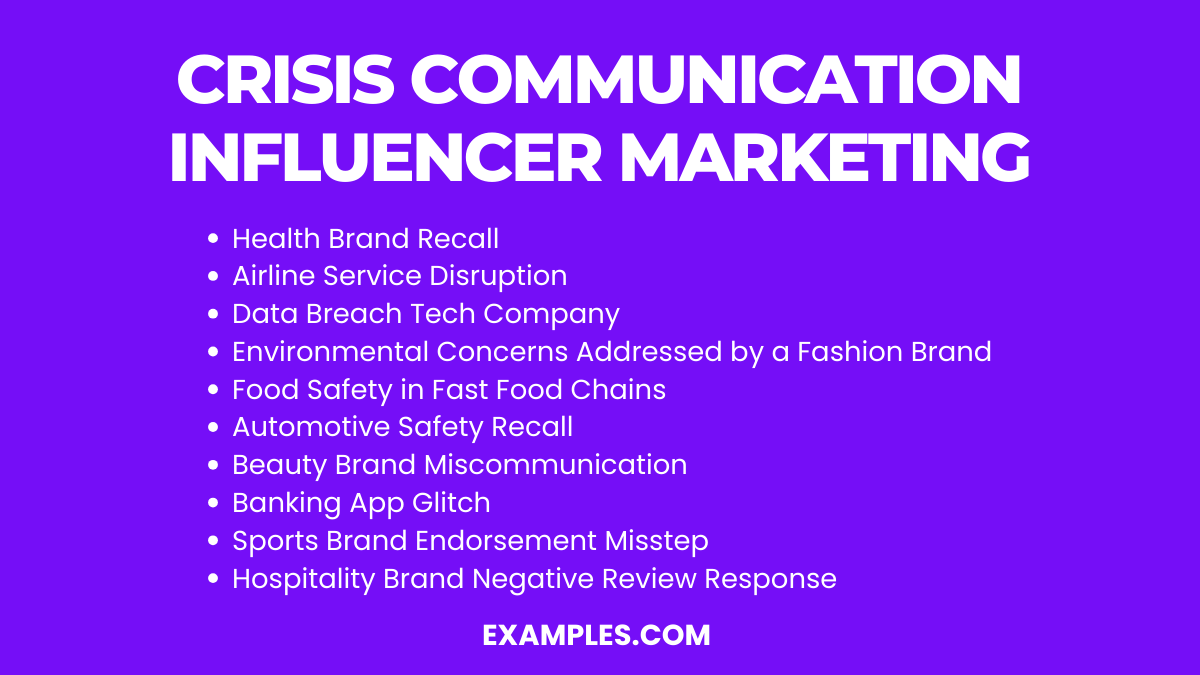Influencer Marketing Communication
Influencer Marketing Communication is revolutionizing how brands interact with their audiences. This complete guide delves into various communication examples, illustrating how influential personalities can effectively bridge the gap between a brand and its target market. By leveraging relatable content and authentic storytelling, influencers can amplify a brand’s message, creating impactful, memorable marketing campaigns. Here, we explore diverse strategies and real-life examples, offering insights into crafting successful influencer marketing communications that resonate with audiences and drive engagement.
Importance of Influencer Marketing Communication PDF
What is Influencer Marketing Communication? – Meaning
Influencer Marketing Communication refers to the strategy of collaborating with influential people, often popular on social media platforms, to promote products, services, or brand messages. These influencers have a significant following and credibility within their niche, making them effective in swaying their audience’s opinions and purchase decisions. The communication part of this strategy involves the messages and content created by these influencers to connect a brand with its target audience authentically and persuasively. This type of marketing is highly valued for its ability to reach specific demographics through trusted and relatable voices.
What is the best Example of Influencer Marketing Communication?
A standout example of Influencer Marketing Communication is the partnership between fashion influencers and clothing brands. For instance, a popular Instagram fashion influencer collaborates with a trendy clothing label. They creatively showcase the brand’s collection through various Instagram posts, integrating their personal styling tips and experiences. This authentic promotion resonates with their audience, leading to increased engagement and traffic for the brand. This illustrates the effectiveness of influencer marketing in conveying a brand’s message through relatable and trusted voices.
20 Influencer Marketing Communication Examples
Influencer Marketing Communication is a dynamic tool where influencers use their platform to amplify a brand’s message, crafting narratives that resonate with their audience. This strategy blends authentic storytelling with strategic brand placement, creating a natural and engaging user experience. From fashion to technology, influencers bring products to life, driving brand awareness and customer engagement. Here, we explore 20 unique and effective examples, each showcasing the versatility and impact of influencer marketing:
- Beauty Vlogger x Cosmetic Brand: A beauty influencer creates a makeup tutorial using a new cosmetic line, highlighting product benefits and ease of use.
- Fitness Trainer x Sportswear Company: A fitness guru showcases the comfort and style of a sportswear brand during workout sessions, emphasizing durability and design.
- Fashion Blogger x Luxury Retailer: An influencer wears outfits from a luxury brand, sharing styling tips and outfit inspirations on Instagram.
- Tech Enthusiast x Gadget Manufacturer: A tech influencer reviews the latest smartphone, focusing on unique features and user experience.
- Food Blogger x Organic Food Brand: A culinary influencer prepares a recipe using organic products, underscoring health benefits and taste.
- Travel Influencer x Luggage Brand: A travel blogger features a durable luggage set in their travel vlogs, highlighting its functionality and design.
- Lifestyle Influencer x Home Decor Brand: An influencer redesigns a room with home decor products, showcasing the transformation and product quality.
- Celebrity x Fashion Label: A celebrity wears a fashion label at high-profile events, driving brand visibility and desirability.
- Parenting Blogger x Children’s Toy Company: A parenting influencer shares educational toys in action, focusing on developmental benefits for children.
- Automotive Blogger x Car Manufacturer: An auto influencer test drives a new model, emphasizing its features, performance, and design.
- Gaming Streamer x Video Game Publisher: A gamer live-streams a new game release, showcasing gameplay and graphics.
- Health Coach x Wellness Brand: A health influencer promotes wellness products, discussing their personal health journey and product efficacy.
- Outdoor Enthusiast x Camping Gear Brand: An adventurer showcases the reliability of camping gear in extreme conditions.
- DIY Expert x Craft Supplies Brand: A DIY influencer creates a project using craft supplies, demonstrating creativity and versatility of the products.
- Comedian x Entertainment Service: A comedian partners with a streaming service, creating humorous content that subtly promotes the platform.
- Pet Blogger x Pet Care Products: A pet influencer showcases pet care products, focusing on the benefits and ease of use for pet owners.
- Book Blogger x Publishing House: A literary influencer reviews a new book release, discussing themes and author style.
- Fitness Model x Health Drink Brand: A fitness model promotes a health drink, highlighting its benefits in their fitness regime.
- Interior Designer x Furniture Brand: An interior designer incorporates furniture into home makeovers, emphasizing aesthetics and comfort.
- Photographer x Camera Manufacturer: A photographer uses a camera brand in their shoots, discussing image quality and camera features.
Influencer Marketing Communication Framework
Influencer Marketing Communication Framework is a structured approach that guides the collaboration between brands and influencers. It ensures a cohesive, targeted, and effective marketing strategy, aligning influencer activities with brand objectives. This framework involves identifying the right influencers, setting clear campaign goals, crafting compelling messages, and measuring success through analytics. It’s crucial for creating impactful, authentic influencer marketing campaigns. Here are 10 unique examples, each with a brief explanation:
- Goal Setting & Influencer Alignment: A brand clearly defines campaign objectives and finds influencers whose values and audience align with these goals.
- Content Creation Guidelines: Establishing specific content standards and guidelines for influencers to follow, ensuring brand consistency.
- Performance Metrics Definition: Setting clear KPIs like engagement rates, reach, and conversion to measure campaign success.
- Communication Calendar: Creating a timeline for content release, aligning with key brand events or product launches.
- Audience Targeting Strategy: Identifying the target audience and tailoring influencer content to appeal to this group.
- Brand Message Integration: Seamlessly integrating the brand’s core message into the influencer’s content to ensure authenticity.
- Feedback Loop Establishment: Setting up regular check-ins with influencers for feedback and adjustments to the campaign.
- Legal and Ethical Guidelines: Implementing clear legal and ethical standards for influencers to adhere to during the campaign.
- Cross-Platform Content Strategy: Developing a strategy for content distribution across various social media platforms for maximum reach.
- Influencer Relationship Management: Building and maintaining strong relationships with influencers for long-term partnerships.
Crisis Communication Influencer Marketing
Crisis Communication Influencer Marketing involves leveraging influencers’ credibility and reach during a brand crisis to restore trust and manage public perception. This strategy uses the authentic voices of influencers to deliver transparent, empathetic messages, addressing issues and providing reassurances. Influencers, with their established follower trust, can effectively mitigate negative sentiment and reinforce brand values. Here are 10 unique examples with brief explanations:
- Health Brand Recall: A health brand collaborates with medical experts on social media to address concerns and provide factual information during a product recall.
- Airline Service Disruption: An airline partners with travel influencers to communicate updates and apologies during major service disruptions, humanizing the brand’s response.
- Data Breach Tech Company: Tech influencers are engaged to explain a data breach situation transparently, reassuring customers about security improvements and preventive measures.
- Environmental Concerns Addressed by a Fashion Brand: A fashion brand works with eco-conscious influencers to address environmental criticisms, showcasing efforts in sustainable practices.
- Food Safety in Fast Food Chains: Trusted culinary influencers communicate the improved food safety measures of a fast-food chain following a health scare.
- Automotive Safety Recall: Influencers with a background in automotive safety collaborate with a car manufacturer to explain a safety recall, emphasizing customer well-being.
- Beauty Brand Miscommunication: After a Example of miscommunication controversy, a beauty brand partners with diverse beauty influencers to rebuild trust and inclusivity.
- Banking App Glitch: Financial influencers discuss a banking app glitch, explaining resolutions and future safeguards, reinforcing customer trust in the brand.
- Sports Brand Endorsement Misstep: Athlete influencers collaborate with a sports brand to address and rectify an endorsement misstep, realigning with core brand values.
- Hospitality Brand Negative Review Response: Travel influencers showcase improvements made by a hospitality brand following negative reviews, highlighting customer-centric changes
What is the Best Strategy for Influencer Marketing Communication?
Developing the best strategy for Influencer Marketing Communication involves several key steps that ensure both the influencer’s content and the brand’s message are aligned, engaging, and effective. Here’s a comprehensive guide to creating a winning influencer marketing strategy:
- Define Clear Objectives: Start by setting specific goals for your influencer marketing campaign. Whether it’s increasing brand awareness, driving sales, or launching a new product, having clear objectives helps in measuring the campaign’s success.
- Understand Your Audience: Identify the demographic and psychographic characteristics of your target audience. Understanding who they are, what they value, and where they spend their time online is crucial for selecting the right influencers.
- Choose the Right Influencers: Look for influencers whose followers align with your target audience. They should not only have a significant reach but also high engagement rates and a reputation for authenticity.
- Craft a Compelling Message: Work closely with the influencer to create a message that resonates with their audience while staying true to your brand. The message should be clear, engaging, and aligned with the overall campaign objectives.
- Focus on Authenticity: Authenticity is key in influencer marketing. Allow influencers to express their genuine opinions about your product or service, as this builds trust with their audience.
- Leverage Multiple Platforms: Don’t limit the campaign to one platform. Utilize different social media channels where your target audience is most active, like Instagram, YouTube, TikTok, or Twitter.
- Track and Analyze Performance: Use analytics tools to track the performance of your influencer campaigns. Monitor metrics like engagement rates, click-through rates, and conversion rates to understand the impact of the campaign and make data-driven decisions for future strategies.
- Establish Long-Term Relationships: Building long-term relationships with influencers can be more beneficial than one-off campaigns. It allows for deeper integration of the influencer with the brand and can lead to more authentic and effective promotions over time.
- Stay Updated with Trends: The digital world is constantly evolving. Keep up with the latest trends in social media and influencer marketing to ensure your strategies remain relevant and impactful.
- Compliance and Transparency: Ensure that all influencer marketing communications are compliant with legal guidelines, including clear disclosures about sponsored content to maintain transparency and trust
How do you Communicate with Influencers?
Effective communication with influencers is crucial in harnessing the full potential of Influencer Marketing Communication. It’s about building a relationship based on clarity, respect, and mutual benefit. Here’s a comprehensive guide to communicating with influencers:
Research and Personalization: Begin by thoroughly researching the influencers. Understand their content style, audience demographics, and interests. Personalize your outreach by mentioning specific content that resonated with you, indicating that you’ve genuinely engaged with their work.
Clear and Concise Messaging: When reaching out, be clear and concise. Present your brand, your objectives for the partnership, and what you admire about their work. Avoid jargon and overly complex proposals. Simplicity and clarity are key.
Setting Expectations: Be upfront about what you expect from the collaboration, including the type of content, key messages, and any campaign hashtags or tags. Discuss timelines, deliverables, and compensation openly. Transparency helps build trust.
Flexibility and Creativity: Allow influencers some creative freedom. They know their audience best, so their input can be invaluable in creating content that resonates. Being flexible in your approach and open to their ideas can lead to more authentic and effective campaigns.
Regular Communication: Maintain regular communication throughout the collaboration. Be available to answer questions, provide feedback, and offer support. Regular check-ins help keep the campaign on track and build a stronger working relationship.
Feedback and Appreciation: After the campaign, provide constructive feedback. Appreciate their efforts and the impact of their work. Positive reinforcement can pave the way for future collaborations.
How to Develop your Influencer Marketing Communication?
Developing an effective Influencer Marketing Communication strategy involves several key steps, each aimed at maximizing the impact of your collaboration with influencers. The goal is to create a campaign that resonates with the target audience, leveraging the influencer’s reach and credibility. Here’s a comprehensive guide to developing your strategy:
- Identify Your Goals: Clearly define what you want to achieve with your influencer marketing campaign. Are you looking to increase brand awareness, drive sales, or improve brand perception? Setting specific, measurable goals is crucial for a successful campaign.
- Understand Your Audience: Know who you are trying to reach. What are their interests, behaviors, and preferences? Understanding your target audience helps in selecting the right influencers who resonate with your audience.
- Choose the Right Influencers: Not all influencers are created equal. Select influencers who align with your brand values and have a genuine connection with their audience. Look for influencers with high engagement rates, not just large followings.
- Develop a Content Strategy: Work with influencers to create content that feels authentic and aligns with both the brand’s and the influencer’s style. This can range from blog posts and social media content to videos and live streams.
- Set Clear Communication Guidelines: While influencers should have creative freedom, Clear Communication important to set certain guidelines to ensure brand messaging is consistent and aligns with your goals.
- Leverage Multiple Platforms: Don’t restrict your campaign to a single platform. Utilize various social media platforms to maximize reach. Each platform has its unique strengths and audience demographics.
- Track and Measure Performance: Use analytics tools to track the performance of your influencer campaigns. Monitor metrics like engagement rates, click-through rates, and conversions to evaluate the campaign’s effectiveness and make necessary adjustments.
- Foster Long-term Relationships: Building long-term relationships with influencers can be more beneficial than one-off campaigns. It leads to more authentic promotion and better audience trust.
- Comply with Regulations: Ensure that all influencer marketing communications comply with legal requirements, such as disclosing sponsored content.
- Be Ready to Adapt: Influencer marketing is an evolving field. Be prepared to adapt your strategies based on new trends, platform changes, and audience feedback.
How Can I Measure the Success of an Influencer Marketing Campaign?
Key performance indicators (KPIs) include engagement rate, click-through rate, conversion rate, and overall brand awareness. Use analytics tools to track these metrics.
What is the Importance of Authenticity in Influencer Marketing?
Authenticity builds trust. Audiences resonate with genuine content, so encourage influencers to create content that aligns with their personal brand while showcasing your product.
Social media and influencer marketing synergize to redefine brand communication. In this dynamic landscape, influencers wield unparalleled influence, serving as trusted conduits between brands and their audience. Platforms like Instagram, and YouTube amplify this collaboration, enabling targeted and engaging content. The authenticity of influencer-driven campaigns fosters a deeper connection with consumers, driving brand loyalty. Metrics like engagement rates and reach become pivotal, reflecting the success of these partnerships. As social media continually evolves, influencer marketing remains a potent strategy, offering brands a vibrant avenue to resonate with their audience, build credibility, and navigate the ever-changing digital terrain.






